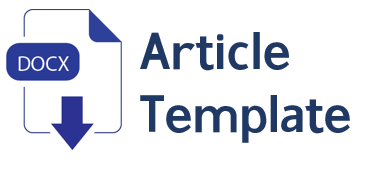Identifikasi Bahaya dan Risiko di Laboratorium SMKN 1 Tanah Luas Menggunakan Metode HIRA
Abstract
When carrying out practical activities carried out in the laboratory, the activity process does not always run as expected. There are times when the process experiences certain problems, one of which is that the practicum stops because the equipment is not functioning properly, causing accidents such as fires or explosions, students who carry out the practicum experience injuries that they get while carrying out the practicum in the laboratory. The purpose of risk assessment is to determine the possibility of occurrence and impact of an event that hinders the achievement of the organization's goals or objectives so that risks can be handled appropriately. This goal can be achieved through risk identification and risk analysis. The benefits of risk assessment include: helping to achieve organizational goals, maintaining continuity of service to stakeholders, providing services effectively and efficiently, being the basis for preparing strategic plans, and avoiding waste. The HIRA method was chosen because this method will identify, assess, and control dangerous risks that have the potential to occur in all work activities. This method can see how big the potential is and how serious it will be if the danger occurs. After identifying hazards using the HIRA method in the laboratory environment of SMK N 1 Tanah Luas. In calculating the level of possible hazards, the parameter for the frequency of occurrence of dangers in the High category is: every time the work is carried out. Medium category, namely: once in 10 to 100. Low category, namely once as long as the work is carried out.
Keywords
Full Text:
PDFReferences
Abrianto, 2013. Identifikasi bahaya, penilaian dan pengendalian risiko di unit destilasi atmosferis. Pengolahan Minyak Pusdiklat Migas Cepu.
Pujiono, Tama, Efranto, 2013. Analisis potensi bahaya serta rekomendasi perbaikan dengan metode hazard and operability study (hazop) melalui perangkingan OSH risk assessment and control. Universitas Brawijaya, Malang.
Sanusi, Despriadi, Yusdinata, 2013. “analisa potensi bahaya dan risiko kegiatan bongkar muat di pelabuhan PTt Sarana Citranusa Kabil dengan metode hirarc. Teknik Industri, Sekolah Tinggi Teknik Ibnu Sina
Safitri, Raharjo, Fitriangga, 2014. Identifikasi potensi bahaya kerja dan pengendalian dampak di unit produksi palm kernel crushing. PT. Wilmar Cahaya Indonesia, Pontianak.
Ihsan, Edwin, Irawan, 2016. Analisis risiko K3 dengan metode hirarc pada area produksi PT. Cahaya Murni Andalas Permai. Fakultas Teknik Universitas Andalas, Padang, Sumatera Barat.
Ramli, S., 2014. Pedoman praktis manajemen risiko. Ed 1, Jakarta : Dian Rakyat.
Asmara, Ayu Mutiara, 2012. Analisa resiko pada kegiatan praktikum kimia analitik kuantitatif di laboratorium kimia teknik metalurgi dan material, Skripsi, FKM UNIVERSITAS INDONESIA, Depok.
Herman, Darmawi, 2016. Manajemen resiko, PT Bumi Aksara, Jakarta
Soehatman, Ramli, 2014. Manajemen resiko dalam perspektif K3 OHS risk management. Dian Rakyat, Jakarta.
Fatimah, S., & Indrawati, F., 2018. Program keselamatan dan kesehatan kerja di laboratorium kimia. Higeia Journal of Public Health Research and Develomment, 1(3), 84-94,
DOI: http://dx.doi.org/10.30811/teknologi.v23i2.4143
Refbacks
- There are currently no refbacks.
Copyright (c) 2023 Sharie Suhaila, Cut Aja Rahmahwati, Faridah

This work is licensed under a Creative Commons Attribution-NonCommercial-ShareAlike 4.0 International License.
INDEXING AND ABSTRACTING BY:
Jurnal Teknologi - Politeknik Negeri Lhokseumawe is licensed under a Creative Commons Attribution-ShareAlike 4.0 International License
©2021 All rights reserved | E-ISSN: 2550-0961; P-ISSN:1412-1476







